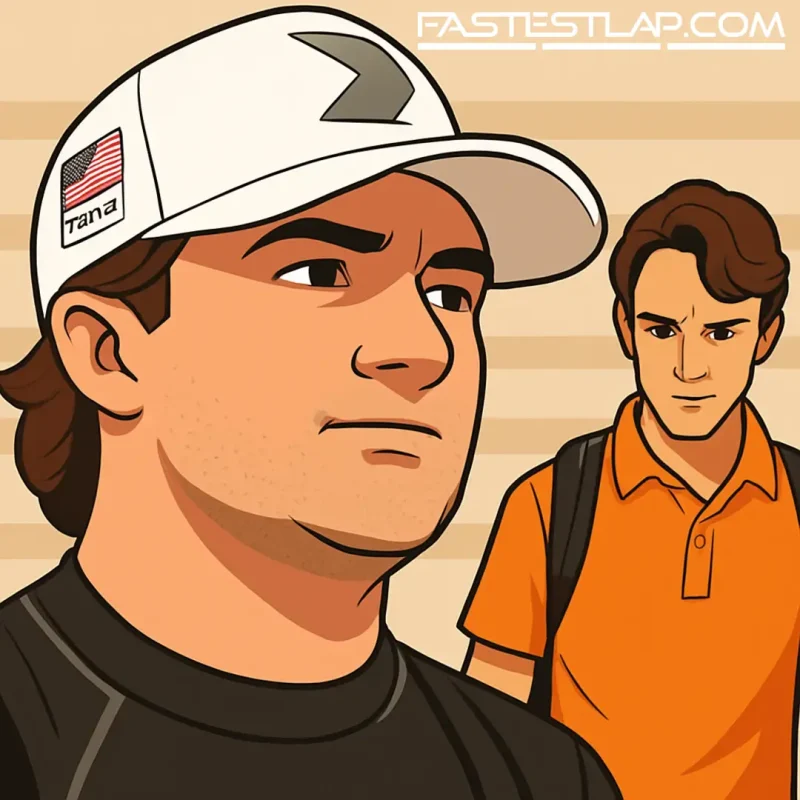Headline: Piastri backs Herta’s Europe gamble: “F2 weekends matter more than test mileage”
Colton Herta’s made his call. He’s leaving the comfort of IndyCar and betting everything on Cadillac’s Formula 1 project, signing up as the team’s first test driver and moving into Formula 2 for 2026. It’s bold, it’s unconventional—and to someone who’s lived the grind, it makes perfect sense.
Oscar Piastri knows the drill better than most. Before becoming McLaren’s race-winner-in-waiting, he logged year after year of testing in old-spec F1 machinery while crushing junior titles, stacking miles in Bahrain, Silverstone and Monza, then dropping into the Young Drivers’ Test at Abu Dhabi. He also knows why you can’t just test your way into being truly ready.
“Both have different purposes,” Piastri said when asked whether racing F2 or hammering through F1 test days is more valuable for a driver like Herta. “Being on an F1 weekend, racing alongside F1, that’s an important thing. It feels quite different to the racing I did before I was on an F1 weekend. So I think that’s definitely important.”
That’s the core of it. F2 doesn’t just give you seat time; it drops you into the same paddock, the same cadence, the same Friday-to-Sunday rhythm as the big show. The same tyre talk, the same parc fermé stress, the same media carousel. That polish matters when your objective isn’t just to go quick—it’s to look and operate like an F1 driver.
As Piastri tells it, F1 testing helps, but only gets you so far. “Getting up to speed in an F1 car is an important thing, but that testing has a limit to its uses. The tyres are not representative. You’re often doing it in winter, or at times when the tracks are not that rubbered in. The cars are old. There’s a lot of limits to it.”
It’s the part of the conversation that gets lost when we reduce a driver’s readiness to “mileage.” Yes, you learn the systems and the speed—how to keep up with the steering wheel exploding with options, how to manage energy and brake magic and endless modes. But without the live ammo of race weekends, the learning curve is incomplete. That’s why Piastri’s endorsement of Herta’s route carries weight: if you split your time, split it intelligently. Use the Cadillac test role to understand the machinery, but get your elbows out every Saturday and Sunday in F2.
Herta, 25, has never been shy about his F1 ambition. The difference now is the avenue. Rather than trying to leap directly from IndyCar into a race seat, he’s taking the long European way round—Cadillac on one shoulder, the junior ladder on the other. It’s a significant reset: new tracks, new tyres, different racecraft tempo, tighter weekends. But his IndyCar background won’t hurt. Raw pace and adaptability tend to travel.
Piastri, who climbed through F3 and F2 with titles and then sat out a year of racing while testing, is careful not to dismiss the value of those private days. He just sees the edges of their usefulness. Winter circuits are green. Tyre constructions on old cars don’t map onto current compounds the way you’d hope. The data is useful, the calibration is real—but so is the gap when you join an actual F1 weekend for the first time. That shock is smaller if you’ve been living it in F2.
The Cadillac piece is already taking shape. The new outfit has confirmed an experienced race pairing in Valtteri Bottas and Sergio Perez—16 grand prix victories between them—and Herta’s role slots in as the team’s development spearhead. Being embedded with that duo while racing on the support bill is a neat trick: you get the best of both worlds without getting lost in either.
If there’s a risk here, it’s workload. F2 is a hard, unforgiving championship; the margins are tiny, the tyre window cruel. Layering in F1 simulator blocks, correlation work and occasional track days can stretch a rookie thin. But there’s a rhythm to be found. Plenty have walked it—few as cleanly as Piastri.
Herta’s move is a statement as much as a strategy. It says he’s ready to swap celebrity status in America for an apprenticeship in Europe to meet F1 on its terms. It says Cadillac’s 2026 entry isn’t just a badge exercise; it’s building a driver pipeline with intent. And it says that if the door opens—through testing, through FP1s, through circumstance—he’ll already be in the room, helmet on, race sharp.
Piastri’s final word? The IndyCar star should be just fine. “Getting your brain used to all the different things you can change, and the speed at which things happen… I’m sure he’ll be fine coming from Indy, but there’s definitely purposes for both.”
On balance, it sounds like Herta’s picked the right fight. Now he has to win it.




